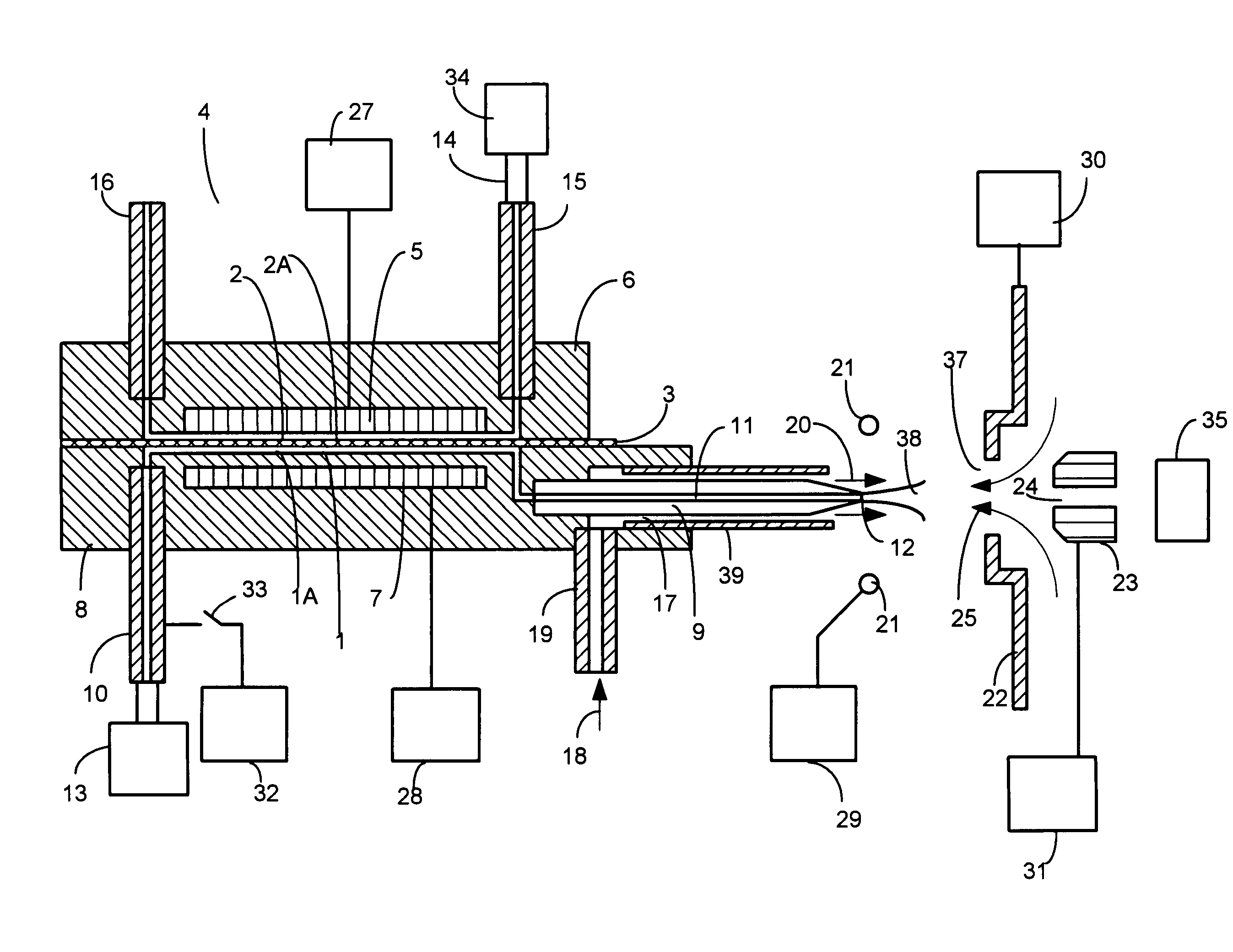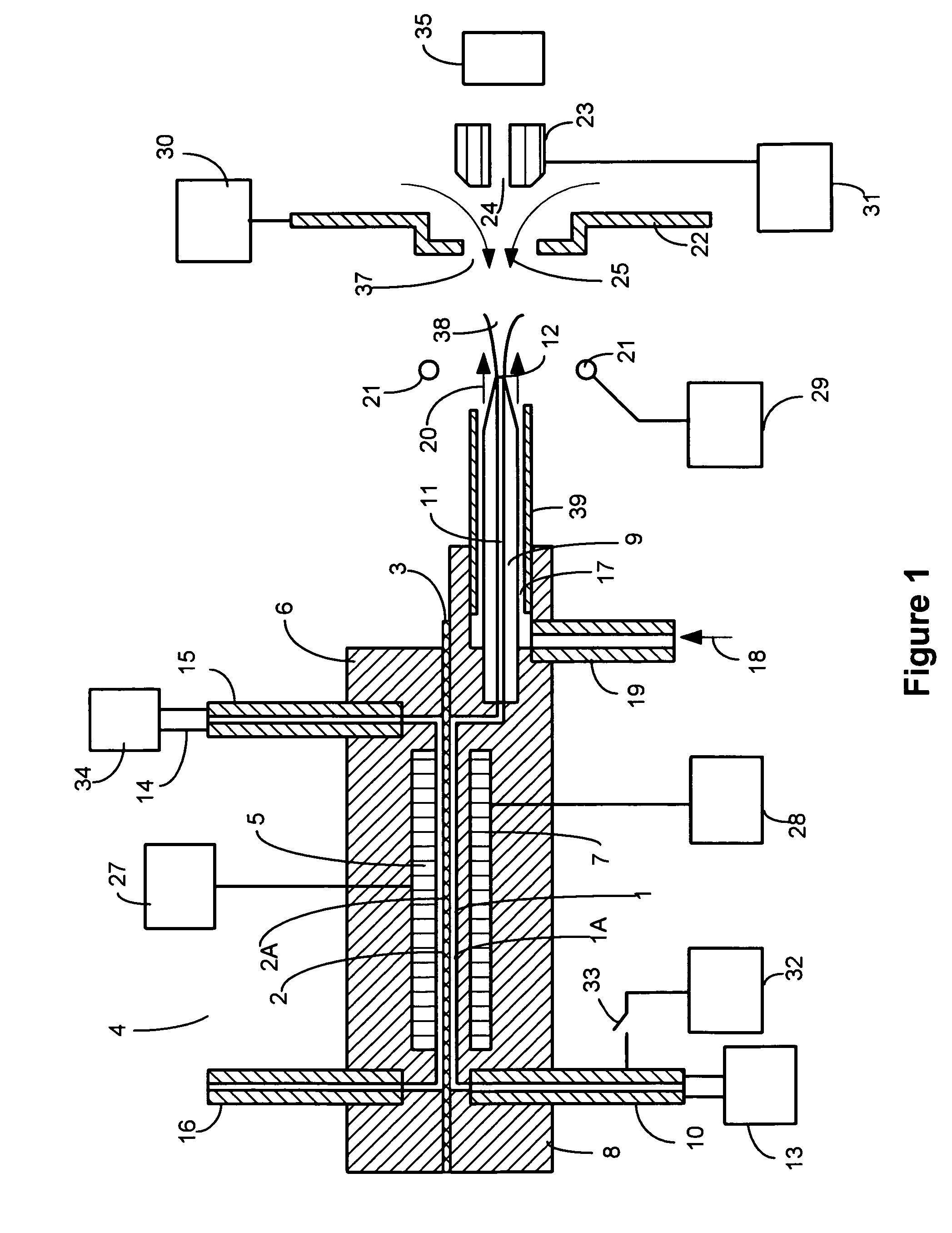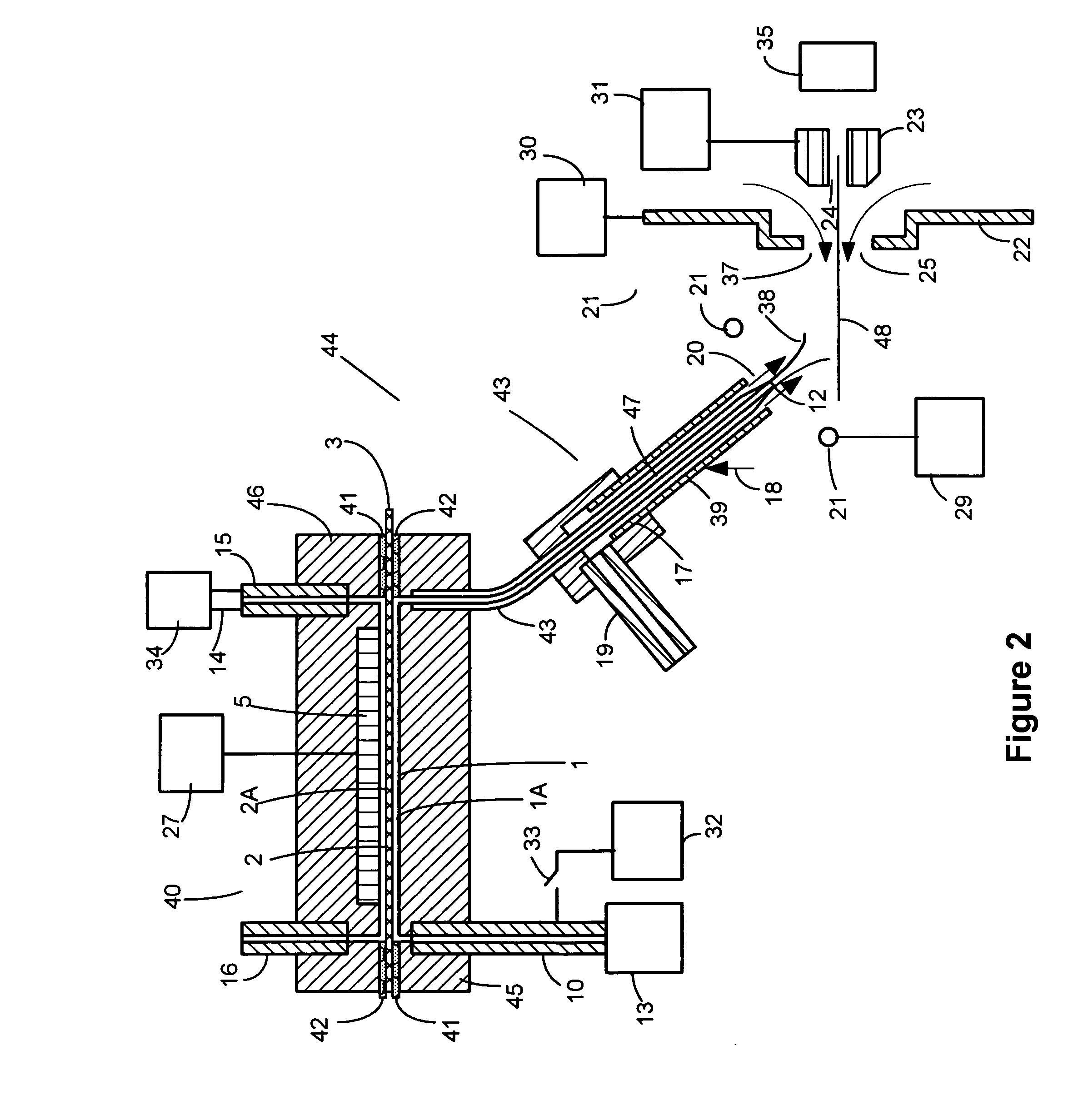Charged droplet sprayers
a technology of sprayer and droplet, which is applied in the direction of instruments, membranes, separation processes, etc., can solve the problems of interference peak in the acquired mass spectrum, and achieve the effect of optimizing the spray performance and increasing the performan
- Summary
- Abstract
- Description
- Claims
- Application Information
AI Technical Summary
Benefits of technology
Problems solved by technology
Method used
Image
Examples
Embodiment Construction
[0045]Charged liquid droplets can be formed in charged droplet spray devices using unassisted Electrospray or pneumatic nebulization in the presence of an electric field. Charged droplet production in unassisted Electrospray requires the formation of a stable Taylor cone jet from the sample solution exiting a channel or tube in the presence of an electric field. The charged droplets form by separating from a liquid filament protruding from the tip of the Taylor cone. If a sample solution has high surface tension, it may not be possible to form a stable Taylor cone at atmospheric pressure where electrical potentials applied have an upper limit due to gas phase break down. If the conductivity of a sample solution is too high, the filament projecting from the Taylor cone may not separate into uniform charged droplets due to damping of the fluid column instability by charge movement within the solution. Stable Taylor cones are more difficult to sustain at higher liquid flow rates. Both ...
PUM
| Property | Measurement | Unit |
|---|---|---|
| molecular weight | aaaaa | aaaaa |
| electrical potential | aaaaa | aaaaa |
| electrical potentials | aaaaa | aaaaa |
Abstract
Description
Claims
Application Information
 Login to View More
Login to View More - R&D
- Intellectual Property
- Life Sciences
- Materials
- Tech Scout
- Unparalleled Data Quality
- Higher Quality Content
- 60% Fewer Hallucinations
Browse by: Latest US Patents, China's latest patents, Technical Efficacy Thesaurus, Application Domain, Technology Topic, Popular Technical Reports.
© 2025 PatSnap. All rights reserved.Legal|Privacy policy|Modern Slavery Act Transparency Statement|Sitemap|About US| Contact US: help@patsnap.com



